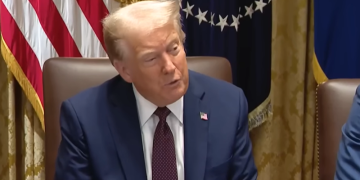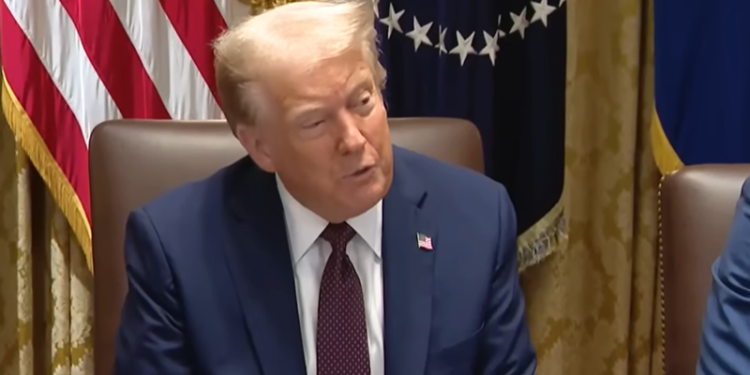The United States implemented a 50% tariff on Indian goods starting Wednesday, escalating trade tensions with India due to its continued purchase of Russian crude oil. The tariffs, which doubled from an initial 25% levy announced on July 30, affect a range of Indian exports and could disrupt billions in trade between the two nations.
The U.S. Department of Homeland Security issued a notice stating that Indian goods entering for consumption or withdrawn from warehouses after 12:01 a.m. EDT on August 27 would face the increased tariffs. The measure follows five rounds of failed trade negotiations between the U.S. and India, with disagreements centered on India’s agricultural and dairy sectors and its refusal to halt Russian oil imports. In 2024, bilateral trade between the two countries reached $212 billion, with India exporting $87 billion in goods to the U.S., its largest export market.
The tariffs target labor-intensive sectors, including textiles, gems and jewelry, footwear, furniture, and industrial chemicals. According to the Global Trade Research Initiative (GTRI), a New Delhi-based think tank, approximately $60.2 billion, or 66% of India’s exports to the U.S., now face the 50% tariff. GTRI estimates these sectors could see a 70% collapse in exports, potentially threatening hundreds of thousands of jobs in India’s export hubs. Textiles and jewelry, which account for significant U.S. market shares, are particularly vulnerable, with 30-40% of their global output directed to the U.S.
Certain Indian goods are exempt from the new tariffs. Pharmaceuticals, valued at $8.7 billion in 2024, remain unaffected due to their role in providing affordable generic drugs to the U.S. market. Semiconductors, consumer electronics, steel, aluminum, and passenger vehicles are subject to separate U.S. tariff frameworks. Goods shipped before August 27 and cleared for consumption by September 17 are also exempt, provided importers use a specific customs code (HTSUS 9903.01.85).
The tariffs stem from U.S. objections to India’s increased reliance on Russian oil, which rose from 1% to 37% of its oil imports since the 2022 Ukraine invasion. U.S. Treasury Secretary Scott Bessent accused India of “profiteering” by reselling Russian oil, a claim India’s foreign ministry rejected, citing energy needs for its 1.4 billion people. Indian Prime Minister Narendra Modi has emphasized protecting farmers and small businesses, stating, “No matter how much pressure comes, we will keep increasing our strength to withstand it.”
India’s government is responding with measures to mitigate the economic impact. Prime Minister Modi announced plans to reduce goods and services taxes and provide financial aid to affected exporters, encouraging diversification into markets like Latin America and the Middle East. The Reserve Bank of India and commerce officials are exploring subsidies and low-cost credit options, though details remain unclear.
The U.S. move has strained a strategic partnership aimed at countering China’s influence in the Indo-Pacific. India’s refusal to open its agricultural and dairy markets to cheaper U.S. imports, which face a 39% average tariff compared to 4% in the U.S., has been a sticking point. Meanwhile, India’s trade surplus with the U.S., valued at $46 billion in 2024, has fueled President Donald Trump’s push for reciprocal trade policies.
Analysts warn of broader implications. The tariffs could shave 0.4-1% off India’s GDP growth, projected at 6.4% for 2026 by the International Monetary Fund. Small and medium enterprises, particularly in textiles and jewelry, face significant losses, potentially shifting market share to competitors like Vietnam and Bangladesh. India’s growing ties with China and Russia, including a planned visit by Russian President Vladimir Putin, signal a potential geopolitical realignment.
The U.S. insists the tariffs address national security concerns tied to Russia’s war in Ukraine, while India argues it faces unfair targeting, noting that China and the EU continue to import Russian energy.




























